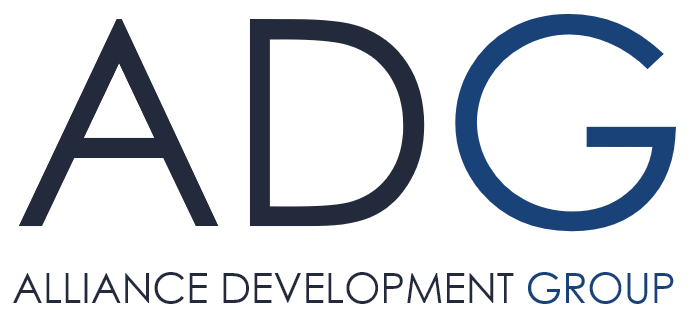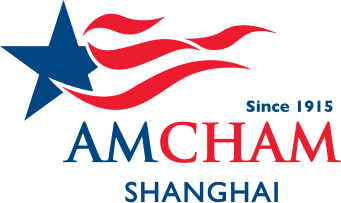How Global Software Companies Enter China
Written by ADG China
03/25/2024
A guide to the most common models software companies use to enter China
In the rapidly evolving global market, expansion into China can present an attractive opportunity for global software companies. Yet, the venture into the Chinese market is fraught with complexities, from regulatory hurdles to cultural nuances to risk and ROI considerations. A commonly asked question we regularly get from small and medium sized enterprise software / SaaS companies is:
"How did [fill in the blank company] enter the China market when we were told [something painfully hard our CEO or board will never approve]?"
Here is a real story. Until about five years ago, most companies primarily chose two models. 1) Go it alone and establish a WFOE (wholly foreign owned entity) and build a local team or 2) Find a distributor / reseller partner or several and try to manage them from overseas. Both directions were well trodden paths and had many successes and failures but were clearly preferred over the dreaded JV model that mostly disappeared years ago except when other options were not possible. There are of course many variations, but these were the primary ways.
With the emergence of cloud and the proliferation of data residency and geopolitical issues, the traditional entry models have become more challenging and expensive forcing many companies to either find alternative paths or avoid the market altogether. If you spend any time reading articles online you might be led to believe the only choices left are the very expensive and time consuming "all-in" forklift your business, cloud, products and team into China or the equally disliked option of handing your IP and licenses over to a local company to run your China business (think Ali/SF, Microsoft/21 Vianet, etc.).
To be fair, the distributor model can work for some on-premise or downloadable software solutions with proven demand but unfortunately most SaaS solutions don’t “just run” out of the box in China. The reasons are many and include technical, compliance or business model issues which means asking a distributor to invest into a product that could be months away from landing or potentially even longer. The roles and responsibilities of both sides become complex and many of these discussions quickly morph into the “Local China Operating Partner” model which can be too complex and expensive for most companies which are already not sure if they are fully committed to China.
It may sound a bit gloomy until you look deeply into the market like ADG has been doing for over 20 years. In reality the number of companies that enter the market in recent years is much greater than those choosing the "all-in", the "Local China Operating Partner" or the traditional Distributor Model. There are better ways for many companies, and we want to share how it is being done.
The way in which many companies actually enter is faster, allows them to maintain control and build the market traction they need before they consider a larger investment. The path we outline below is used by many small and medium sized software and SaaS companies that are looking to develop the local market or simply service their existing multinational customers in China.
The model below sounds obvious and natural - and it is. The problem is that many companies think it is not allowed because they misunderstand the following:
- SaaS companies often do not have to land their entire global cloud in China to be compliant
- Cloud companies have ways where they CAN often operate their own clouds without a local operating partner
- Even when a local partner is required for a highly regulated sector the company can limit the role of the Local China Operating Partner
- Companies do not need to lock themselves to a Local China Operating Partner before they have proven the market and tested and built their product.
- A WFOE or local entity is not required or even recommended in many cases to get started in China
Here, we share the roadmap used by many companies and forged by ADG to allow companies to minimize their upfront investment until the market proves viable. This does not mean you can’t go all-in, copy & paste a full China cloud. You can. Just most companies will not. Here is the alternative approach that can work for many companies.
Phase 1: Laying the Groundwork
Preparation: Confirm there is a viable way to predictably enter the market without any major surprises
Before venturing into the Chinese market, the initial step involves preparation. This stage is crucial for mapping out the product architecture, compliance, IP protection, and GTM strategy needed to bring confidence to the executive team that there are no major blockers in the long-term strategy. This period of preparation is necessary for companies to understand the market landscape, IP status, potential compliance issues, and general costs and risks associated with different options. For those already active in China or with a clear vision, this stage can be brief. However, most companies require several months to confidently greenlight the China entry program.
The work here is not traditional market confirmation or strategy consulting but typically requires working with local market experts that specialize in the challenges foreign companies face in China and can see the whole picture from end-to-end - from product readiness, licensing and compliance, landing, set-up, GTM, partnering, operations and growth strategy. This high-level sanity check is for the companies who “don’t know what they don’t know.” ADG has a solution where we bring together legal, business and technical experts to work together to provide a quick and cost-effective review (sanity check) for our clients.
ADG Recommendation:
Many companies get trapped in analysis paralysis in Phase 1. They have a lot of questions that need to be answered but many cannot be answered in advance and so they look to put together a master plan which includes trying to identify their long-term partners in advance. This sounds reasonable but in practice Local China Operating Partners or landing partners are typically ill suited to understand your needs and strategy and aren't experienced with the nuances faced by foreign companies in China. It is much easier to handle these issues without bringing a "landing partner" or Local China Operating Partner in too early. Instead, bring in experts like ADG that can both answer your high-level strategy questions as well as provide you with solutions that allow you to run technical trials or POCs in advance of making any commitments to the market or having any local entity or presence.
The reality on the ground is that companies that have proven products, can operate compliantly and effectively in the market, have their pick of local partners, and can dictate the terms and ultimately control their own destiny.
Phase 2: Landing, Building and Initial Operations
Objective: Investing in the basics needed to generate demand and close business
The heart of Phase 2 is the Landing Stage, where companies build and begin to operate within the Chinese market. The goals are to be able to attract and close business with customers in China without the heavy lift of trying to replicate your entire technical infrastructure and operations teams in China.
Depending on your strategy most or all of the activities can be achieved without a local entity, a major commitment or a lock-in to a long-term partner or the market.
The basics
- Product enablement: Confirm the product performs well in China. When needed, add some light infrastructure in China to improve performance.
- Build a foundation for marketing and demand generation which typically includes a very basic WeChat presence and independent simplified website domiciled inside the China firewall (global websites don't index well in China and are susceptible to technical and compliance issues that can be easily avoided with a local site).
- Work with a handful of cross-border resellers, strategic resellers or SIs to prime the market and access some critical large enterprise customers.
- Deploy some basic operations functions to process transactions in China per the local market's preferences.
- Basic Customer Support: China customers prefer some basic onboarding and hand holding especially as access to overseas English resources are not typically useful.
- Entity: Work with local partners like ADG that already have the legal entity, experts and business and technical operations team to get you up and running in months.
Phase 3: Expansion and Localization
There is no need to go into the details of Phase 3 as every company will have their own mission and playbook on how to expand. The key point here is that companies can achieve Phase 1 and 2 in months without a long-term commitment to the China market. In Phases 1 and 2, should any major issues or surprises appear, companies can simply turn it off and walk away.
Budgetary Guidance and Operational Costs
The journey from preparation to landing and expansion will be unique to every company but taking the staged approach doesn’t require the length of time and investment that would be needed by setting up a WFOE, landing a full-cloud in China or selecting a long term local operating partner – the three areas that are the costliest to the budget and the most challenging to predict in advance. Working with a local expert like ADG can help provide you with a quick assessment on the cost ranges for many of the items your team may not have visibility around as well as what types of solutions exist for bringing in expert service providers that fill in any needed gaps. There is a highly developed ecosystem of companies in China that we work with regularly and can support almost any need.
Conclusion: A Path to Success
Embarking on an expansion into China can be a daunting yet attractive prospect for any company. With ADG's experts, strategic blueprint, and unique hybrid cooperation models, businesses can learn about ways to manage their risk and navigate the China market's complexities. Companies can achieve a successful and sustainable presence in China by laying a solid foundation in the Prep Work Stage and building upon it through targeted strategies in the Landing and Expansion stages. Whether you're in the early stages of considering China or ready to take the plunge, ADG is happy to share our experience with your executive team and see if China makes sense for your company.



